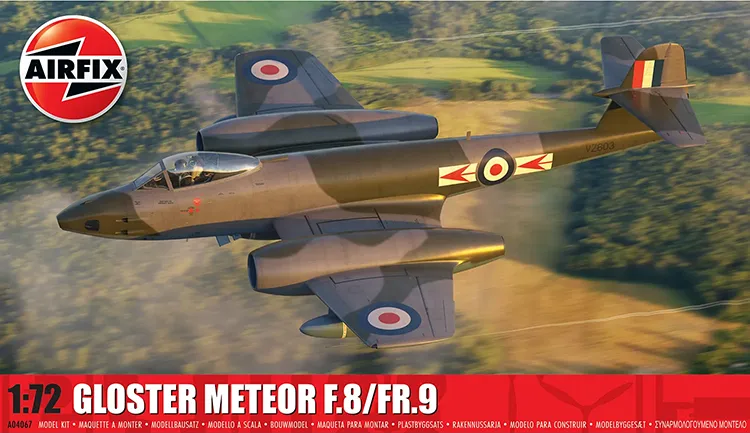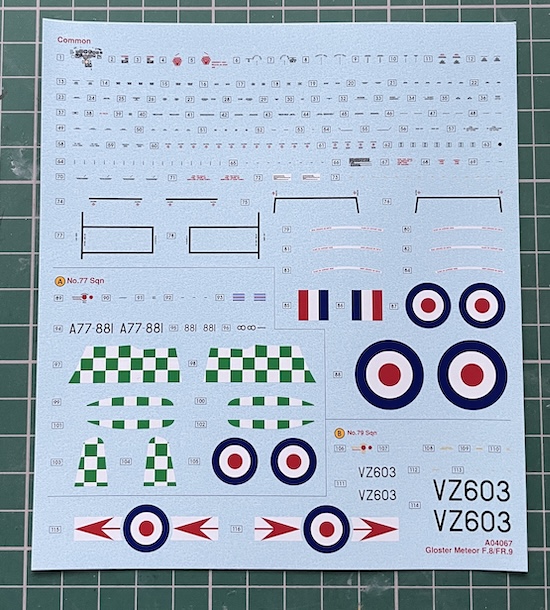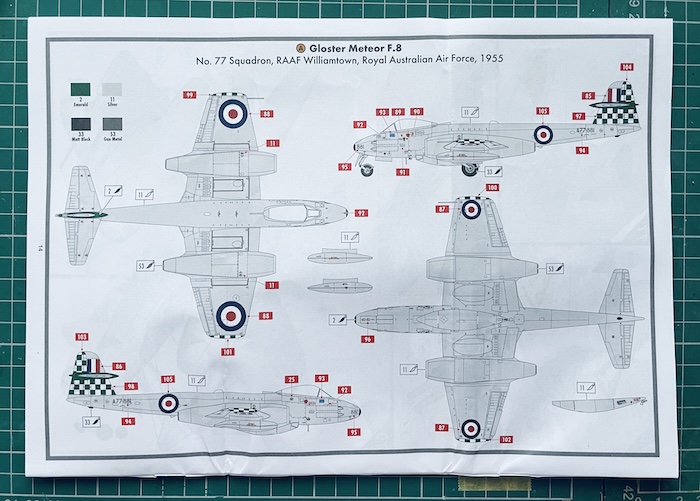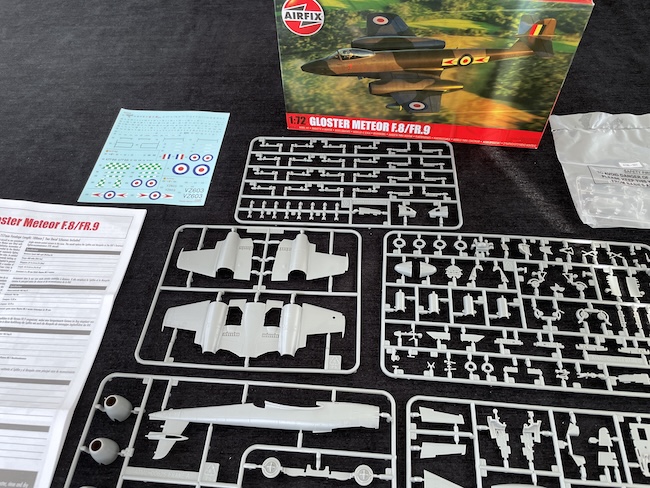
Full Review with Geoff Coughlin
Get this kit now from Airfix
Useful References:
A77 Gloster Meteor
Gloster Meteor A77
VIDEO REFERENCE
Here’s some very useful information from Airfix about this scheme and aircraft featured in this build:
Scheme A – Gloster Meteor F.8 A77-881, No.77 Squadron Royal Australian Air Force, RAAF Williamtown, New South Wales, Australia, 1955
The Royal Australian Air Force have a proud reputation in operating the Gloster Meteor F.8, with No.77 Squadron being the only RAAF squadron committed to combat on the type during the Korean War. With the squadron due to return home from deployment in Japan in June 1950, the outbreak of the Korean War saw them remaining overseas as a significant Australian contribution to the conflict, initially flying their Mustang fighters in bomber escort sorties, but later switching to a ground attack role.
Following China’s entry into the conflict, the Australian Mustangs were coming into contact with MiG-15 jets, and the venerable Second World War fighter was no match for these diminutive jets, leading to an immediate requirement for them to upgrade their own fighting capabilities. Despite requesting the purchase of several US and British jet fighter types, the only aircraft immediately available to them was the Gloster Meteor F.8,. Therefore, in February 1951, 15 Meteor F.8 fighters and two T.7 trainers were loaded aboard the British light fleet carrier HMS Warrior bound for No.77 Squadron RAAF, who had temporarily been withdrawn from the fighting, returning to Japan for re-equipping.
Arriving at Iwakuni the following month, the aircraft were individually unloaded from the carrier and lowered onto a barge, for onward delivery to RAAF base Iwakuni. Accompanying the aircraft were four experienced RAF Meteor pilots/instructors, who were temporarily assigned to the RAAF to introduce No.77 Squadron pilots to their new jets and to assist in their effective and speedy transition from Mustang to Meteors.
Once converted, the squadron resumed operational duties in Korea from July 1951, based at Kimpo air base just outside Seoul, where it joined other Allied units for the remainder of the conflict. Unfortunately, the Meteor was inferior to the MiG-15 in combat situations, so the squadron was assigned to flying secondary air defence duties. Although they claimed three MiG-15 fighters destroyed in aerial combat, Australian pilots were frustrated at the lack of action.
In a brave, yet inspirational decision, the squadron was once again unleashed in a ground attack role, using the Meteor in a way for which it was not intended and indeed, pioneering its use as a ground attack jet. No.77 Squadron RAAF earned a reputation for excellence in this role, with their Meteors regarded as the most successful ground attack aircraft in theatre.
Full scheme details for this well-travelled Royal Australian Air Force Gloster Meteor F.8.
After almost 12 years of continuous overseas service, No.77 Squadron RAAF finally returned home to Australia in December 1954. The 41 Meteors aboard the RAN carrier HMAS Vengeance were distributed between Nos 75 and 77 Squadrons, with No.77 Squadron subsequently reforming and becoming operational at Williamtown on 4th January 1955.
To commemorate their impressive recent period of lengthy overseas deployment, No.77 Squadron embarked on ‘Operation Welcome Home’, a month-long tour of the country which began on 21st January 1955. The tour consisted of the Squadron’s aircraft flying a formation ‘77’ in the skies above every major Australian city, culminating with a display over Sydney on 18th February, with the aim of allowing as many people as possible to see this unique aviation spectacle.
The Meteor’s service in Australia was short lived, and by August 1956, the unit relinquished their British jets, trading them for Commonwealth Aircraft Corporation Sabres, which were operational by November that year.
Gloster Meteor F.8 A77-881 was one of the aircraft which returned to Australia in 1954, allocated to No.77 Squadron at Williamtown. With her distinctive green chequered tail and wingtips, she is a fine modelling tribute to the RAAF’s use of the Meteor, so successful in an operational capacity during the Korean War and in more of a commemorative capacity during their short period flying in home skies.
A short appeal for help


The Airfix kit looks very nice in this scale…

If you didn’t see my in-box browse, you can see it here.